Digital Asset Management Market Overview:
The Digital Asset Management (DAM) market in Europe is experiencing robust growth, driven by the increasing need for organizations to manage, store, and distribute digital assets effectively. Industries such as media, retail, manufacturing, and technology are the primary drivers of this market. DAM systems are critical for businesses seeking to streamline digital workflows, improve content management, and enhance collaboration. Our report provides an in-depth analysis of procurement trends, focusing on cost optimization strategies, digital tool adoption, and supplier management to improve DAM efficiency.
Key future challenges in DAM procurement include managing the rising cost of software licenses, meeting the growing demand for cloud-based solutions, and addressing data security concerns. Leveraging digital procurement tools and strategic sourcing is crucial to optimizing the DAM supply chain and ensuring a competitive edge. As the demand for digital content management continues to rise, companies are utilizing market intelligence to enhance operational efficiency and mitigate procurement risks.
The DAM market in Europe is expected to maintain steady growth through 2032, with key highlights including:
- Market Size: The European DAM market is projected to reach EUR 6.0 billion by 2032, growing at a CAGR of approximately 15.8 % from 2024 to 2032.
Growth Rate: 15.8%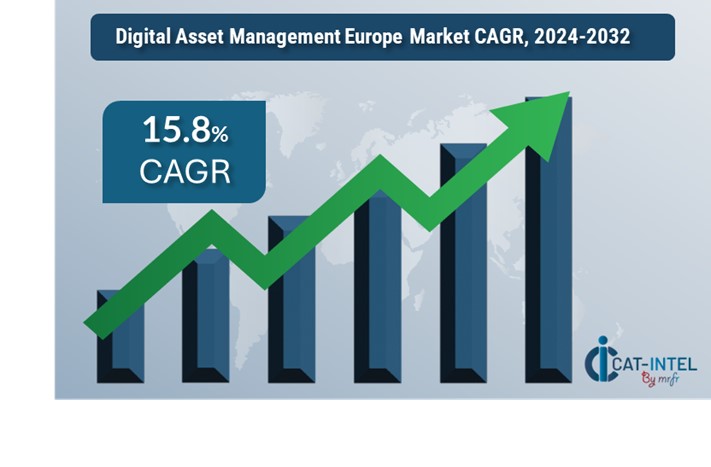
- Sector Contributions: Growth in the DAM market is driven by:
- Media and Entertainment Demand: The need for efficient management of large volumes of multimedia assets, such as videos, images, and audio files, is boosting market growth.
- Retail and E-commerce Sector Growth: Increasing demand for visual and digital content for marketing, branding, and product catalogues is driving the adoption of DAM solutions.
- Technological Transformation: Cloud Adoption: Cloud-based DAM solutions are revolutionizing asset storage, management, and access, offering increased flexibility and scalability.
- AI and Automation: Artificial intelligence (AI) and machine learning are enhancing asset tagging, searchability, and metadata management.
- Innovations: Integration with Other Systems: DAM solutions are increasingly integrating with other business tools like Customer Relationship Management (CRM) systems, Content Management Systems (CMS), and e-commerce platforms for seamless data flow.
- Investment Initiatives: Investment in AI and Analytics: Companies are investing in AI-driven technologies to enhance content discovery, automate workflows, and optimize asset usage and ROI.
- Regional Insights: Europe remains a key market for DAM, driven by robust digital transformation initiatives, widespread adoption of cloud solutions, and a strong emphasis on data privacy and security regulations such as GDPR.
Key Trends and Sustainability Outlook:
- Cloud Integration: Increased adoption of cloud-based solutions for DAM, offering better scalability, lower infrastructure costs, and more flexible access to assets.
- Sustainability Focus: Growing demand for digital asset management platforms that prioritize energy-efficient cloud solutions and the reduction of carbon footprints.
- Customization Trends: Rising demand for tailored DAM solutions to meet industry-specific needs, such as for retail, healthcare, and finance sectors.
- AI-Powered Content Search: Use of AI and machine learning to improve metadata tagging, automate workflows, and make content search and retrieval more efficient.
Growth Drivers:
- E-commerce Expansion: The increasing reliance on digital content in e-commerce platforms is driving the need for efficient and scalable DAM solutions.
- Data Security Regulations: Compliance with stringent data protection regulations like GDPR in Europe is creating opportunities for more secure DAM systems.
- Marketing and Branding Needs: The demand for enhanced marketing content management and branding consistency is fuelling the growth of DAM solutions.
Overview of Market Intelligence Services for the Digital Asset Management Europe Market:
Recent analyses have identified key procurement challenges, including high software licensing fees, integration complexities, and the need for ongoing platform upgrades. Market intelligence services offer actionable insights into procurement opportunities, helping organizations identify cost-saving strategies, optimize supplier management, and enhance overall DAM system resilience. These services support compliance with regulatory requirements, improve content accessibility, and foster collaboration among teams, while managing costs effectively.
Procurement Intelligence for Digital Asset Management Europe: Category Management and Strategic Sourcing
To stay competitive in the DAM market, companies are refining their procurement strategies through spend analysis, supplier performance evaluation, and ongoing market trend monitoring. Effective category management and strategic sourcing are critical to reducing procurement costs and ensuring a consistent supply of high-quality DAM solutions. By leveraging actionable market intelligence, organizations can enhance procurement strategies and negotiate favorable terms for their DAM system needs.
Pricing Outlook for Digital Asset Management Europe: Spend Analysis
The pricing outlook for Digital Asset Management (DAM) solutions in Europe is expected to maintain moderate stability, although fluctuations may occur due to several key influencing factors. Key drivers of DAM pricing trends include the rising cost of cloud storage services, data security measures, software licensing fees, and the growing demand for advanced AI-powered features. Additionally, the shift toward subscription-based pricing models and the demand for customization are contributing to price increases in some segments of the market.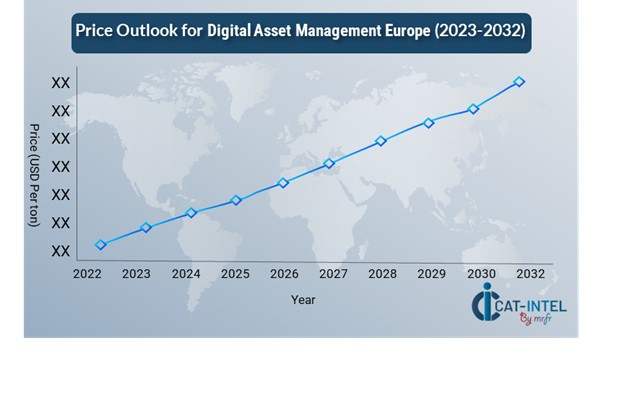 Graph shows general upward trend pricing for Digital Asset Management Europe and growing demand. However, there may be fluctuations influenced by economic conditions, technological advancements, and competitive dynamic.
Graph shows general upward trend pricing for Digital Asset Management Europe and growing demand. However, there may be fluctuations influenced by economic conditions, technological advancements, and competitive dynamic.
Efforts to optimize procurement processes, improve supplier relationships, and adopt cost-effective, scalable solutions are essential for managing DAM pricing. Leveraging digital tools to monitor market trends, forecast price changes, and streamline procurement workflows will further enhance cost management.
Additionally, negotiating long-term contracts, ensuring system integration, and choosing flexible pricing models can help manage expenses effectively. Despite these challenges, ensuring data security, aligning with regulatory requirements, and investing in cutting-edge technologies will remain crucial for maintaining cost efficiency in the DAM space.
Cost Breakdown for Digital Asset Management Europe: Total Cost of Ownership (TCO) and Cost-Saving Opportunities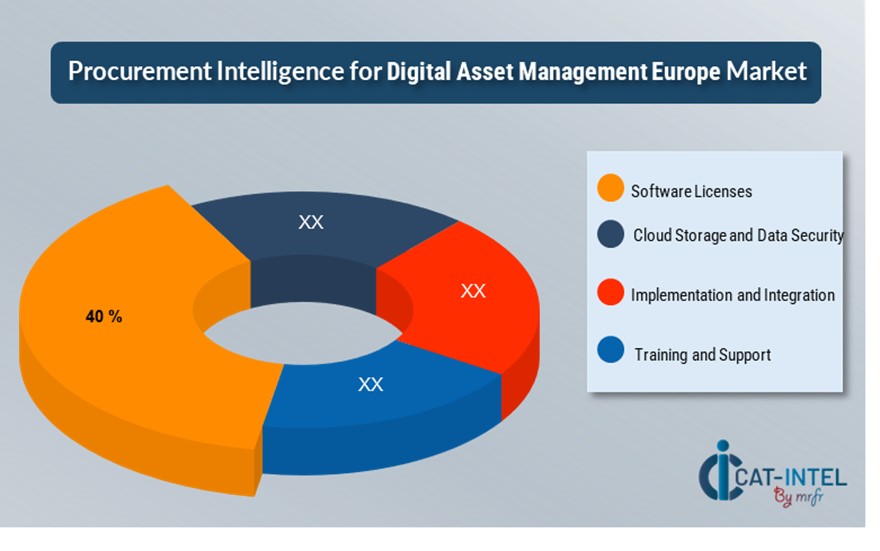 Software Licenses (40%)
Software Licenses (40%)
- Description: A significant portion of the cost of DAM systems comes from software licenses, which can be priced based on the number of users, storage capacity, or subscription model. The cost is influenced by the complexity of the solution and any additional features like AI-powered asset tagging or automation capabilities.
- Trends: Increasing demand for subscription-based models offers flexibility but can lead to higher long-term costs. Businesses are exploring tiered pricing models, volume discounts, and multi-year contracts to control costs. Open-source or hybrid DAM systems are also gaining traction as cost-effective alternatives.
- Cloud Storage and Data Security (XX%)
- Implementation and Integration (XX%)
- Training and Support (XX%)
Cost-Saving Opportunities: Negotiation Levers and Purchasing Negotiation Strategies
In the Digital Asset Management (DAM) sector, optimizing procurement and utilizing effective negotiation strategies can lead to significant cost savings and enhanced operational efficiency. Establishing long-term agreements with DAM solution providers, particularly those offering cloud-based solutions, can result in better pricing and more favourable terms, such as volume discounts and reduced service fees. Bulk purchasing of licenses or multi-year contracts offer opportunities to secure lower rates and lock in pricing, mitigating price volatility in the evolving DAM landscape.
Collaborating with suppliers that prioritize innovative technologies, such as AI-powered search capabilities or enhanced security features, can provide cost reductions through more efficient processes. Implementing digital tools for procurement, such as contract management systems and supplier performance tracking, enhances efficiency, minimizes costs, and allows for better forecasting. Leveraging shared storage and flexible payment models can further streamline costs. Diversifying supplier networks and adopting multi-supplier strategies can help mitigate risks, such as service outages, and provide greater leverage during negotiations.
Supply and Demand Overview for Digital Asset Management (DAM) in Europe: Demand-Supply Dynamics and Buyer Intelligence for Effective Supplier Relationship Management (SRM)
The Digital Asset Management (DAM) market in Europe is experiencing steady growth, driven by rising demand from sectors like media and entertainment, retail, and corporate organizations managing extensive digital content libraries. The balance between supply and demand is influenced by factors such as technological advancements, licensing models, and data privacy regulations.
Demand Factors:
- Data-Heavy Industries: The increasing need for efficient storage, retrieval, and management of digital assets in industries like media, advertising, and retail is driving demand for robust DAM systems.
- Cloud Adoption: The ongoing shift to cloud-based solutions for managing digital content is fuelling the demand for scalable and secure DAM platforms.
- AI and Automation: Growing demand for AI-powered features like automated metadata tagging, predictive analytics, and smart content categorization is shaping market trends.
- Data Privacy and Compliance: Stricter data protection laws such as GDPR are driving the demand for DAM solutions that ensure compliance and data security.
- Customization Needs: Increasingly specialized requirements for certain industries, like real-time collaboration in the creative industry or integration with existing business systems, are pushing suppliers to offer customized solutions.
Supply Factors:
- Cloud Infrastructure: The availability and pricing of cloud storage services and the proliferation of cloud-native DAM solutions significantly impact supply.
- Technological Advancements: Innovations in AI, machine learning, and cloud technologies are improving the functionality of DAM solutions, making them more efficient and capable of handling larger volumes of digital content.
- Regulatory Landscape: Compliance with evolving data protection laws, particularly in Europe, influences DAM solution providers and their pricing models.
- Global Trade and Competition: The entrance of new players into the European market, along with existing providers expanding their reach, is increasing competition and influencing both pricing and service offerings.
- Integration Capabilities: The demand for seamless integration with existing enterprise systems, such as CRMs or CMSs, impacts supply dynamics, pushing providers to innovate and ensure their systems are compatible with a wide range of technologies.
Regional Demand-Supply Outlook: Digital Asset Management in Europe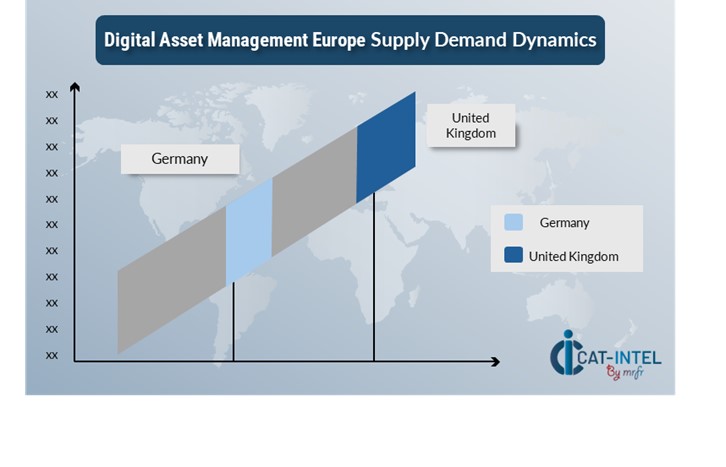 The Image shows growing demand for Digital Asset Management in Europe in both United Kingdom and Germany, with potential price increases and increased Competition.
The Image shows growing demand for Digital Asset Management in Europe in both United Kingdom and Germany, with potential price increases and increased Competition.
Europe: Dominance in the Digital Asset Management Market
Europe is becoming a key player in the global DAM market due to several factors:
- High Digitalization: European companies across various industries are increasingly adopting digital technologies to manage content efficiently, fueling demand for DAM systems.
- Technological Integration: Advanced AI and machine learning capabilities, integrated into DAM systems, are improving automation and enhancing system performance in managing digital assets.
- Evolving Regulatory Standards: Stricter data privacy regulations such as GDPR are driving demand for DAM solutions that ensure data compliance and security.
- Sustainability and Innovation: European providers are adopting sustainable practices in data storage and processing, aligning with regional sustainability goals and environmental standards.
- Customization-Driven Growth: Investment in customizable, scalable DAM solutions that cater to specific industries is enabling European vendors to meet diverse market needs effectively. Enhanced features like real-time collaboration, advanced search functionality, and multi-platform integration continue to drive growth in the region.
Europe Remains a key hub Digital Asset Management price drivers Innovation and Growth. 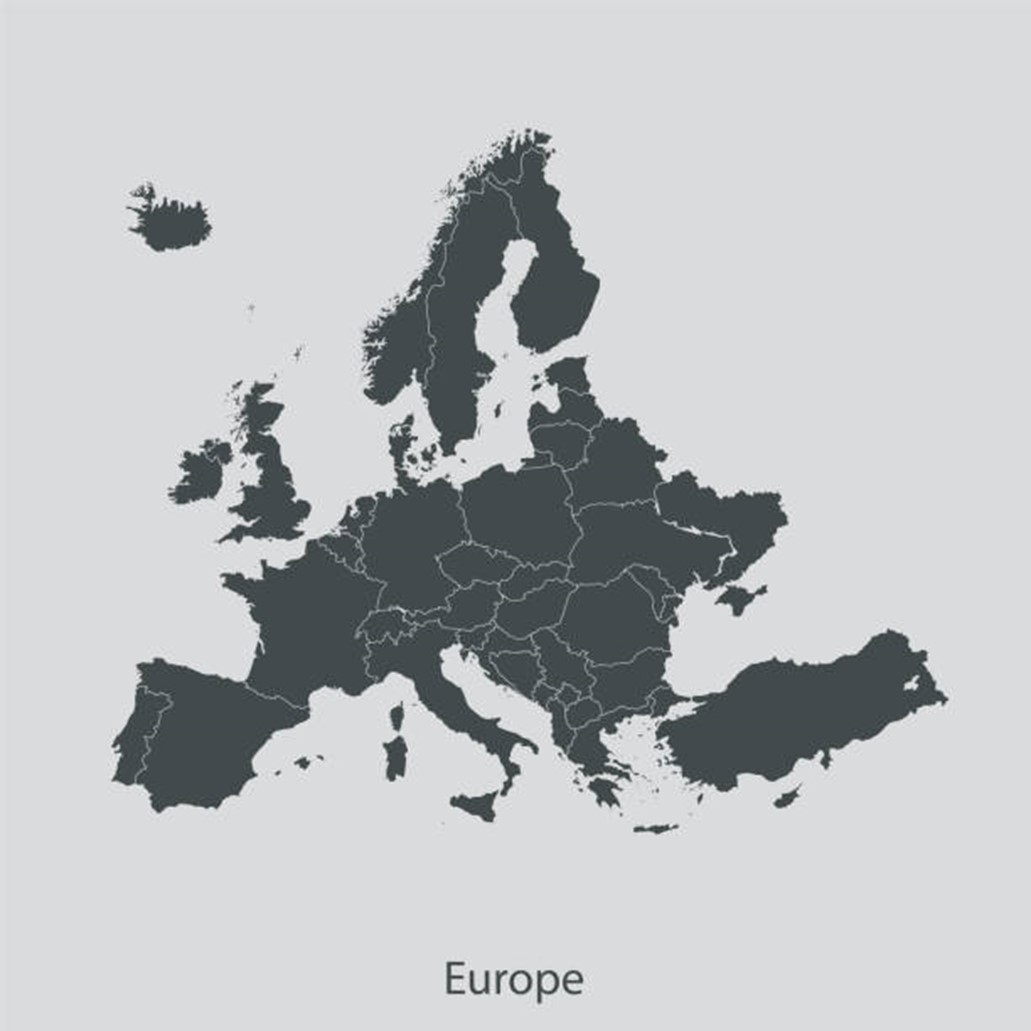
Supplier Landscape: Supplier Negotiations and Strategies
The supplier landscape in the Digital Asset Management (DAM) market is diverse and highly competitive, consisting of both global technology providers and regional specialists. These suppliers significantly influence key factors such as pricing, technology integration, and service quality. The market is led by established global software companies offering comprehensive DAM solutions, while smaller, specialized suppliers cater to niche demands such as customized DAM solutions for specific industries or advanced features like artificial intelligence (AI)-driven asset management.
As demand for digital asset management grows across industries like media, entertainment, e-commerce, and corporate sectors, suppliers are enhancing product capabilities, integrating cutting-edge technologies such as cloud-based solutions and AI, and adopting sustainable practices to deliver scalable, high-performance solutions.
Key Suppliers in the Digital Asset Management Market Include:
- Adobe Inc.
- Bynder
- Widen Collective
- OpenText
- Canto
- Media Valet
- Nuxeo
- Cumulus (by Widen)
- Brand folder
- Veeva Vault QMS
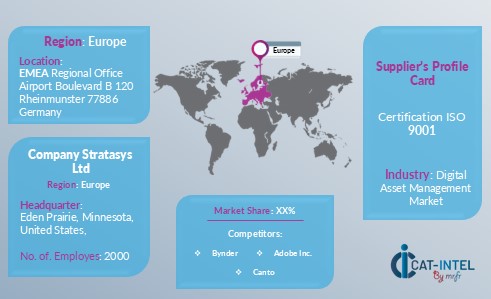
Key Developments Procurement Category Significant Development:
|
Significant Development |
Description |
|
Market Growth |
The Digital Asset Management (DAM) market in Europe is experiencing rapid growth, driven by the increasing adoption of digital media, the need for efficient content management, and the rise of e-commerce and digital marketing across industries. |
|
Sustainability Focus |
With growing concerns around sustainability, European companies are placing more emphasis on DAM solutions that help reduce the environmental impact of content creation and storage, such as energy-efficient systems and practices promoting the use of reusable digital assets. |
|
Product Innovation |
DAM providers are innovating by offering features like AI-powered asset tagging, automated workflows, and enhanced integration with cloud storage solutions, improving asset searchability, collaboration, and content distribution for marketing and creative teams. |
|
Technological Advancements |
The integration of advanced technologies such as Artificial Intelligence (AI), Machine Learning (ML), and blockchain is transforming DAM systems, enabling better metadata management, predictive content analysis, and enhanced security measures, especially in Europe’s highly regulated environment. |
|
Global Trade Dynamics |
Shifts in data privacy laws, such as GDPR in Europe, are influencing the way companies handle and store digital assets, creating opportunities for DAM providers to enhance compliance features and provide secure, region-specific solutions. |
|
Customization Trends |
Increasing demand for customized DAM solutions to cater to diverse sectors, including media, retail, and automotive, where specific workflows, user access levels, and integration with legacy systems are critical for efficient digital asset management. |
|
Digital Asset Management Europe Attribute |
Details |
|
Market Sizing |
The European DAM market is projected to reach EUR 6.0 billion by 2032, growing at a CAGR of approximately 15.8 % from 2024 to 2032. |
|
DAM Technology Adoption Rate |
Around 55% of organizations in Europe are adopting advanced DAM technologies such as AI-powered tagging, cloud-based storage, and automation to enhance content management and distribution efficiency. |
|
Top DAM Industry Strategies for 2024 |
Key strategies include enhancing AI and machine learning integration, improving cross-platform content distribution, adopting cloud-native solutions, and focusing on security and compliance to meet GDPR requirements. |
|
DAM Process Automation |
Approximately 45% of companies in Europe have automated DAM processes such as content tagging, metadata management, and asset retrieval, reducing manual effort and improving operational efficiency. |
|
DAM Process Challenges |
Major challenges include managing large volumes of diverse media assets, ensuring compliance with GDPR and data privacy regulations, integrating DAM systems with other enterprise software, and maintaining scalability. |
|
Key Suppliers |
Leading DAM providers in Europe include Adobe, Bynder, Widen, and OpenText, offering a range of solutions tailored to marketing, media, and corporate sectors. |
|
Key Regions Covered |
Prominent DAM adoption regions in Europe include Western Europe (UK, Germany, France), with increasing demand from industries such as retail, media, entertainment, and manufacturing. |
|
Market Drivers and Trends |
Growth is driven by the increasing need for efficient content management, enhanced collaboration across teams, the rise of e-commerce, growing digital marketing efforts, and regulatory compliance requirements, including GDPR. |
Frequently Asked Questions (FAQ):
Our procurement intelligence services provide comprehensive market analysis, identifying key DAM providers in Europe, evaluating their product offerings, and tracking industry trends. We assist in spend analysis, supplier evaluations, and sourcing strategies to help secure reliable DAM solutions at competitive prices.
We assist in assessing the TCO for DAM systems by considering costs such as software licensing, integration, customization, training, and ongoing support. Our analysis ensures a clear understanding of the long-term financial impact of implementing a DAM system.
Our risk management services address challenges such as data security, system integration, regulatory compliance, and vendor lock-in. These strategies ensure secure, scalable, and cost-effective DAM implementations.
Our Supplier Relationship Management (SRM) services focus on fostering strong partnerships with DAM software providers. We assist in contract negotiations, track supplier performance, and ensure smooth integration into your content management ecosystem.
We recommend best practices such as vendor evaluation, total cost analysis, user experience testing, and continuous monitoring. These practices ensure efficient and transparent sourcing of DAM solutions that align with your organization's needs.
Digital tools enhance DAM procurement by automating asset tagging, streamlining metadata management, and improving workflow automation. These advancements reduce manual effort, improve content organization, and increase operational efficiency.
Our supplier performance management services track key metrics such as system uptime, support response times, and software updates. These evaluations ensure the continued reliability and performance of your DAM system over time.
We support negotiations by leveraging market insights, assessing competitor pricing, and employing strategies such as long-term contracts, volume discounts, and flexible service level agreements (SLAs) to secure favourable terms with DAM providers.
We offer tools that provide detailed insights into DAM software features, pricing trends, vendor performance, and industry forecasts. These resources enable data-driven decision-making for your DAM procurement strategies.
We help ensure compliance by ensuring that DAM providers adhere to industry standards, data privacy regulations (such as GDPR), and your organization's internal policies. This ensures secure, compliant asset management across all sourcing activities.
We recommend working closely with DAM providers to ensure smooth system integration, utilizing third-party consultants when necessary, and implementing phased rollouts to minimize disruptions and ensure alignment with your existing infrastructure.
Our tracking solutions monitor metrics such as system performance, vendor support quality, software updates, and user satisfaction. This helps evaluate supplier reliability and inform future sourcing decisions for DAM systems.
We identify DAM providers that prioritize eco-friendly practices, such as energy-efficient data centers and reducing the environmental impact of digital storage. These solutions help align your digital asset management strategy with your organization's sustainability goals.
Our pricing analysis compares vendor offerings, tracks market trends, and applies negotiation strategies to ensure cost-effective DAM solutions while maintaining high-quality features and functionality.








